Instruction
The Enlightenment of Golf Instruction
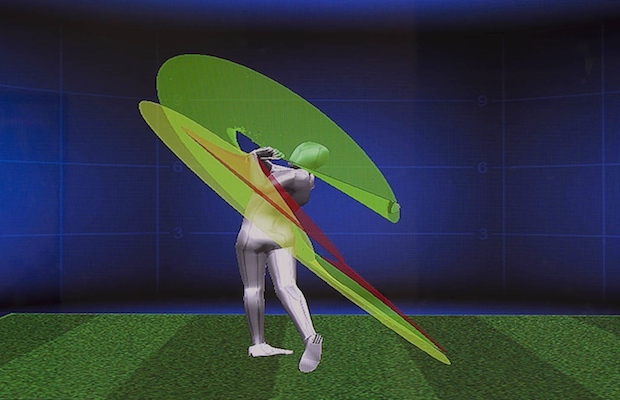
There is an ancient adage that says, “May you live in interesting times.” In golf instruction, these are the most interesting times, “The Enlightenment” as I like to call it. The reference is of course to that great age of scientific discovery that followed the Dark Ages. Our golf enlightenment is here, right now, and those of us in this field are the benefactors of all the science that is available to us.
The scientific breakthroughs are the result of the myriad of new technologies at our disposal. No longer are we in the dark ages of conjecture, estimation and “seems like.” We have the ability to know precisely what happened on every swing and every shot. And the real truth is available to anyone curious enough to seek it.
Having been at my craft for some time, it is truly exciting to be a part of this enlightenment. For the first 400 years or so of golf instruction, teachers used nothing but their eyes and experience to estimate how the golf ball behaved and what caused it to do what it did. The “Ball Flight Laws,” as we called them, were our one and only guide. It worked fairly well, but I think down deep we all knew something was missing.
Then came the advent of video, the ability to observe motion with high-speed, stop-action cameras that provided far more detail than we had with the naked eye. We could better observe the swing by slowing it down and stopping it, and even comparing it to the greats of the game.
Above: A Golf Digest swing sequence of Rory McIlroy (left) and Tiger Woods.
With video, we could actually show the student what they were doing; they no longer simply heard us instructors, they could see in vivid detail what the video captured. Again, it worked well, but real truth seekers still knew something was missing.
What was missing, we now know, was this: The real golf swing is a 3D motion (the backswing is up, in and back; the downswing is down, out and forward). It has forces, torques and a planar quality that cannot be captured completely by 2D video. The flat screen depiction lacks the depth dimension that is so critical to understanding actual motion.
How could we get better? Along came the latest in our quest to gather, store and analyze data: 3D motion analysis systems and Doppler radar launch monitors that can track the golf club and golf ball along their entire journey. Eureka! The holy grail! At least for now.
I am not here to demean video teaching. I use it, my students love it and it has merit; particularly observing the body motion of the player. But to capture and quantify the extent and true range of motion, forces and torques, a 3D system is needed. I have a very trained eye for a golf swing, but I cannot see what the radar sees no matter how closely or carefully I look. And even if I could, it is nice to know how much of what I’m seeing is germane to a student’s problems.
I use Flightscope, which measures and/or calculates 24 variables of golf club and golf ball in swing or flight. Do you know how far you hit every club in your bag? Do you know your optimal launch conditions for every drive you hit? How about the TRUE path on which you’re swinging? These things are vital to understanding and improving your swing and are discovered by radar only.
I love learning as much as anything I do in life. It is exhilarating staying up past the point of fatigue just to gather a little more insight into a subject. I’ve been this way my whole life, and I feel that any committed teacher should be a dedicated, lifetime learner. Could I “get by” on things I knew years ago? Sure. Could I make a living teaching golf without the investment I’ve made in technology? Probably. But those who cease to learn should cease to teach.
It might be comfortable to stick my head in the sand and regurgitate popular adages about the golf swing, but that would never satisfy my insatiable appetite for learning the truth about what is going on right before my eyes. This quest is challenging and, at times, frustrating. It is never easy to abandon long-held beliefs when confronted with new insights. We see this dynamic in all walks of life. But when science proves something beyond all doubt, it is incumbent upon the teacher to pass these truths on to their students. If there is an art to this craft, it involves the humility of saying I don’t know it all, I have much to learn, but I do know where to find it. Once the truth has been discovered, the teacher continually works on new ways of presenting these findings to the student. There are an infinite variety of learning styles, and instructors are constantly working on ways of several ways to present the same information.
Here’s an example: 80 percent of the initial direction of a golf shot (the horizontal launch) is the result of the clubface at impact. I believed otherwise for many years. Radar proved my theory wrong, so I now teach what science knows to be true. If there is an art to golf instruction, it has to do with this humility.
This knowledge quest also keeps my work from getting stale and recharges my teaching battery every day. It is my job to know the subject in all of its complexity and teach it in all simplicity. Staying aware of the science of golf instruction allows me to do just that. Last week, I helped a guy conquer a serious case of the shanks. There is nothing quite so rewarding as the smile in a student’s eyes when they hit better shots. It keeps me grounded and reminds me how uncommonly lucky I am to do what I do.
If you like science as well as golf, please enjoy these enlightening and entertaining facts.
- The golf ball is in contact with the club face 0.0004 seconds. That is 800 times faster than one can blink an eye.
- The average touring professional has the golf ball on the face of the club about 3 seconds for a full season on tour.
- The toe of the golf club travels some 14-to-15 mph faster than the heel, and 7 mph faster than the sweet spot.
- The highest ball speed ever recorded is 226 mph. The average ball speed on the PGA Tour is a mere 168 mph.
- The fastest club head speed ever recorded is 151 mph . The PGA Tour average is 113 mph.
- Bubba Watson led the PGA Tour last year with an average ball speed of 185 mph.
- Every mile per hour you can increase your swing speed will net you about 2-to-3 yards of extra distance
- Elite level ball strikers hit every club (driver to wedge) the same height. For PGA Tour players, the average is 30 yards (90 feet).
- At impact, the force of the golf club on the ball is more than 1600 pounds.
- A golf ball struck 1 inch toward the toe OPENS the face some 5 degrees.
- A golf ball struck 1 inch toward the heel CLOSES the face some 5 degrees.
- The average drive by a PGA Tour player is in the air 6.5 seconds. The average RE-MAX Long driver contestant hits a drive with a hang time of 8.5 seconds!
- The average driver attack angle on PGA Tour is 1.3 degrees DOWN. The average attack angle in Long Drive Competitions is 5 degrees UP! One 2010 contestant recorded an angle of attack that was 13 degree up (+13).
- A ball struck as little as ONE DIMPLE toward the toe or heel of the club can open or close the face enough to affect the shot.
- On a driver with 10 degrees of loft, the bottom of the face will have about 7 degrees of loft; the top of the face will have about 13 degrees of loft!
There are many of these “fun facts” on various sites on the web; people such Dave Tutleman, Sasho Mackenzie, Steven Nesbit and others conduct vital research on an ongoing basis. I am a teacher, not a scientist, and as such, have benefited from the “R&D” of the many golf engineers and scientists who take the time to study this area and provide us all with great research. As instructors, it is our job to take it to the golfer, and the golfer’s job to take it to the course.
As always, feel free to send a swing video to my Facebook page and I will do my best to give you my feedback.
Instruction
The Wedge Guy: Beating the yips into submission

There may be no more painful affliction in golf than the “yips” – those uncontrollable and maddening little nervous twitches that prevent you from making a decent stroke on short putts. If you’ve never had them, consider yourself very fortunate (or possibly just very young). But I can assure you that when your most treacherous and feared golf shot is not the 195 yard approach over water with a quartering headwind…not the extra tight fairway with water left and sand right…not the soft bunker shot to a downhill pin with water on the other side…No, when your most feared shot is the remaining 2- 4-foot putt after hitting a great approach, recovery or lag putt, it makes the game almost painful.
And I’ve been fighting the yips (again) for a while now. It’s a recurring nightmare that has haunted me most of my adult life. I even had the yips when I was in my 20s, but I’ve beat them into submission off and on most of my adult life. But just recently, that nasty virus came to life once again. My lag putting has been very good, but when I get over one of those “you should make this” length putts, the entire nervous system seems to go haywire. I make great practice strokes, and then the most pitiful short-stroke or jab at the ball you can imagine. Sheesh.
But I’m a traditionalist, and do not look toward the long putter, belly putter, cross-hand, claw or other variation as the solution. My approach is to beat those damn yips into submission some other way. Here’s what I’m doing that is working pretty well, and I offer it to all of you who might have a similar affliction on the greens.
When you are over a short putt, forget the practice strokes…you want your natural eye-hand coordination to be unhindered by mechanics. Address your putt and take a good look at the hole, and back to the putter to ensure good alignment. Lighten your right hand grip on the putter and make sure that only the fingertips are in contact with the grip, to prevent you from getting to tight.
Then, take a long, long look at the hole to fill your entire mind and senses with the target. When you bring your head/eyes back to the ball, try to make a smooth, immediate move right into your backstroke — not even a second pause — and then let your hands and putter track right back together right back to where you were looking — the HOLE! Seeing the putter make contact with the ball, preferably even the forward edge of the ball – the side near the hole.
For me, this is working, but I am asking all of you to chime in with your own “home remedies” for the most aggravating and senseless of all golf maladies. It never hurts to have more to fall back on!
Instruction
Looking for a good golf instructor? Use this checklist

Over the last couple of decades, golf has become much more science-based. We measure swing speed, smash factor, angle of attack, strokes gained, and many other metrics that can really help golfers improve. But I often wonder if the advancement of golf’s “hard” sciences comes at the expense of the “soft” sciences.
Take, for example, golf instruction. Good golf instruction requires understanding swing mechanics and ball flight. But let’s take that as a given for PGA instructors. The other factors that make an instructor effective can be evaluated by social science, rather than launch monitors.
If you are a recreational golfer looking for a golf instructor, here are my top three points to consider.
1. Cultural mindset
What is “cultural mindset? To social scientists, it means whether a culture of genius or a culture of learning exists. In a golf instruction context, that may mean whether the teacher communicates a message that golf ability is something innate (you either have it or you don’t), or whether golf ability is something that can be learned. You want the latter!
It may sound obvious to suggest that you find a golf instructor who thinks you can improve, but my research suggests that it isn’t a given. In a large sample study of golf instructors, I found that when it came to recreational golfers, there was a wide range of belief systems. Some instructors strongly believed recreational golfers could improve through lessons. while others strongly believed they could not. And those beliefs manifested in the instructor’s feedback given to a student and the culture created for players.
2. Coping and self-modeling can beat role-modeling
Swing analysis technology is often preloaded with swings of PGA and LPGA Tour players. The swings of elite players are intended to be used for comparative purposes with golfers taking lessons. What social science tells us is that for novice and non-expert golfers, comparing swings to tour professionals can have the opposite effect of that intended. If you fit into the novice or non-expert category of golfer, you will learn more and be more motivated to change if you see yourself making a ‘better’ swing (self-modeling) or seeing your swing compared to a similar other (a coping model). Stay away from instructors who want to compare your swing with that of a tour player.
3. Learning theory basics
It is not a sexy selling point, but learning is a process, and that process is incremental – particularly for recreational adult players. Social science helps us understand this element of golf instruction. A good instructor will take learning slowly. He or she will give you just about enough information that challenges you, but is still manageable. The artful instructor will take time to decide what that one or two learning points are before jumping in to make full-scale swing changes. If the instructor moves too fast, you will probably leave the lesson with an arm’s length of swing thoughts and not really know which to focus on.
As an instructor, I develop a priority list of changes I want to make in a player’s technique. We then patiently and gradually work through that list. Beware of instructors who give you more than you can chew.
So if you are in the market for golf instruction, I encourage you to look beyond the X’s and O’s to find the right match!
Instruction
What Lottie Woad’s stunning debut win teaches every golfer

Most pros take months, even years, to win their first tournament. Lottie Woad needed exactly four days.
The 21-year-old from Surrey shot 21-under 267 at Dundonald Links to win the ISPS Handa Women’s Scottish Open by three shots — in her very first event as a professional. She’s only the third player in LPGA history to accomplish this feat, joining Rose Zhang (2023) and Beverly Hanson (1951).
But here’s what caught my attention as a coach: Woad didn’t win through miraculous putting or bombing 300-yard drives. She won through relentless precision and unshakeable composure. After watching her performance unfold, I’m convinced every golfer — from weekend warriors to scratch players — can steal pages from her playbook.
Precision Beats Power (And It’s Not Even Close)
Forget the driving contests. Woad proved that finding greens matters more than finding distance.
What Woad did:
• Hit it straight, hit it solid, give yourself chances
• Aimed for the fat parts of greens instead of chasing pins
• Let her putting do the talking after hitting safe targets
• As she said, “Everyone was chasing me today, and managed to maintain the lead and played really nicely down the stretch and hit a lot of good shots”
Why most golfers mess this up:
• They see a pin tucked behind a bunker and grab one more club to “go right at it”
• Distance becomes more important than accuracy
• They try to be heroic instead of smart
ACTION ITEM: For your next 10 rounds, aim for the center of every green regardless of pin position. Track your greens in regulation and watch your scores drop before your swing changes.
The Putter That Stayed Cool Under Fire
Woad started the final round two shots clear and immediately applied pressure with birdies at the 2nd and 3rd holes. When South Korea’s Hyo Joo Kim mounted a charge and reached 20-under with a birdie at the 14th, Woad didn’t panic.
How she responded to pressure:
• Fired back with consecutive birdies at the 13th and 14th
• Watched Kim stumble with back-to-back bogeys
• Capped it with her fifth birdie of the day at the par-5 18th
• Stayed patient when others pressed, pressed when others cracked
What amateurs do wrong:
• Get conservative when they should be aggressive
• Try to force magic when steady play would win
• Panic when someone else makes a move
ACTION ITEM: Practice your 3-6 foot putts for 15 minutes after every range session. Woad’s putting wasn’t spectacular—it was reliable. Make the putts you should make.
Course Management 101: Play Your Game, Not the Course’s Game
Woad admitted she couldn’t see many scoreboards during the final round, but it didn’t matter. She stuck to her game plan regardless of what others were doing.
Her mental approach:
• Focused on her process, not the competition
• Drew on past pressure situations (Augusta National Women’s Amateur win)
• As she said, “That was the biggest tournament I played in at the time and was kind of my big win. So definitely felt the pressure of it more there, and I felt like all those experiences helped me with this”
Her physical execution:
• 270-yard drives (nothing flashy)
• Methodical iron play
• Steady putting
• Everything effective, nothing spectacular
ACTION ITEM: Create a yardage book for your home course. Know your distances to every pin, every hazard, every landing area. Stick to your plan no matter what your playing partners are doing.
Mental Toughness Isn’t Born, It’s Built
The most impressive part of Woad’s win? She genuinely didn’t expect it: “I definitely wasn’t expecting to win my first event as a pro, but I knew I was playing well, and I was hoping to contend.”
Her winning mindset:
• Didn’t put winning pressure on herself
• Focused on playing well and contending
• Made winning a byproduct of a good process
• Built confidence through recent experiences:
- Won the Women’s Irish Open as an amateur
- Missed a playoff by one shot at the Evian Championship
- Each experience prepared her for the next
What this means for you:
• Stop trying to shoot career rounds every time you tee up
• Focus on executing your pre-shot routine
• Commit to every shot
• Stay present in the moment
ACTION ITEM: Before each round, set process goals instead of score goals. Example: “I will take three practice swings before every shot” or “I will pick a specific target for every shot.” Let your score be the result, not the focus.
The Real Lesson
Woad collected $300,000 for her first professional victory, but the real prize was proving that fundamentals still work at golf’s highest level. She didn’t reinvent the game — she simply executed the basics better than everyone else that week.
The fundamentals that won:
• Hit more fairways
• Find more greens
• Make the putts you should make
• Stay patient under pressure
That’s something every golfer can do, regardless of handicap. Lottie Woad just showed us it’s still the winning formula.
FINAL ACTION ITEM: Pick one of the four action items above and commit to it for the next month. Master one fundamental before moving to the next. That’s how champions are built.
PGA Professional Brendon Elliott is an award-winning coach and golf writer. You can check out his writing work and learn more about him by visiting BEAGOLFER.golf and OneMoreRollGolf.com. Also, check out “The Starter” on RG.org each Monday.
Editor’s note: Brendon shares his nearly 30 years of experience in the game with GolfWRX readers through his ongoing tip series. He looks forward to providing valuable insights and advice to help golfers improve their game. Stay tuned for more Tips!





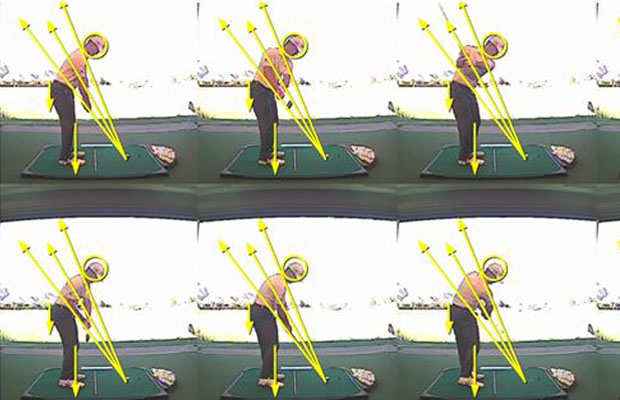

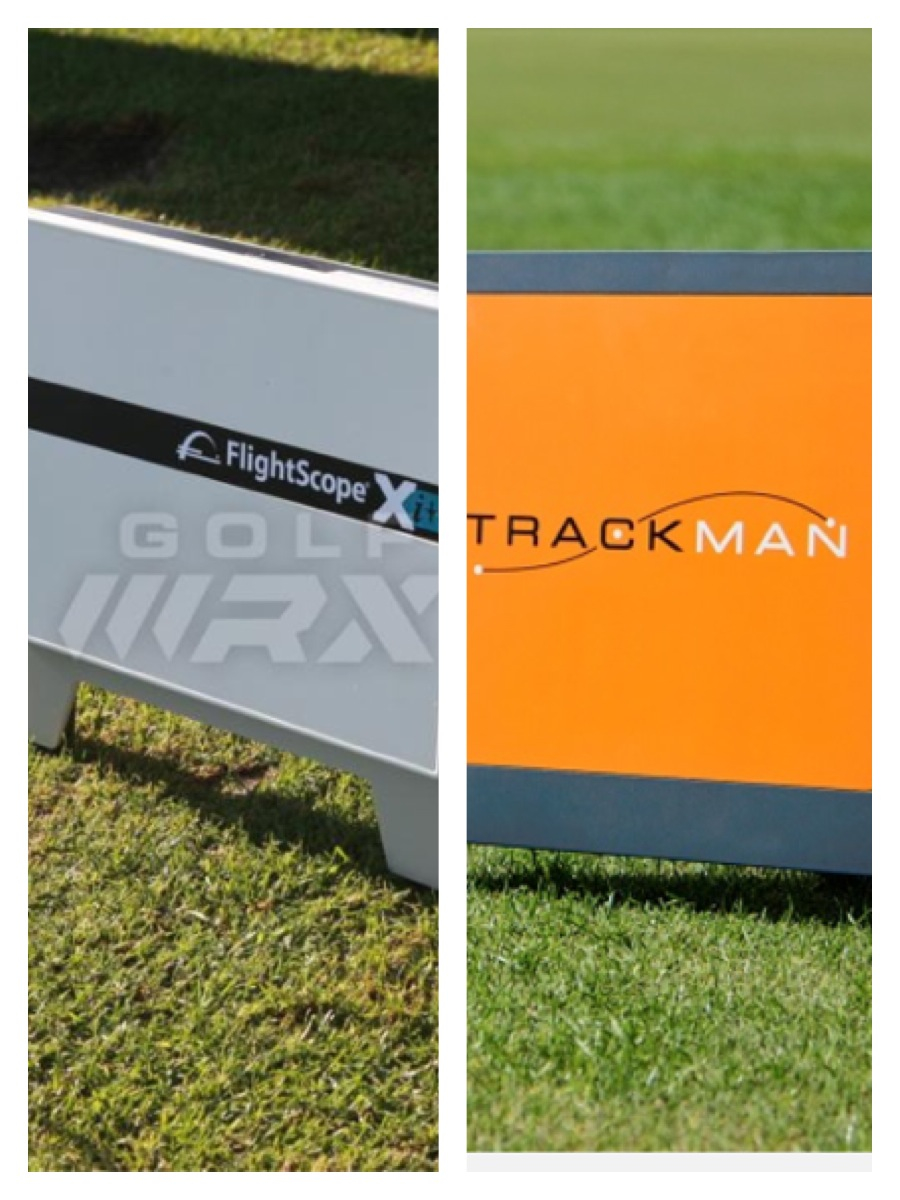
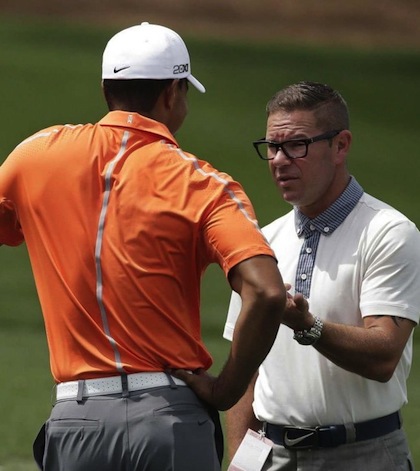
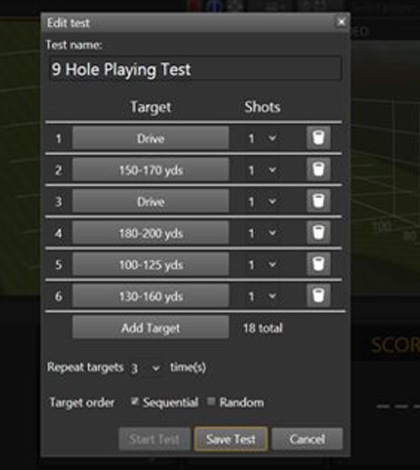








Jason Sutton
Jan 10, 2014 at 11:38 pm
Well written and thought out Dennis. This is the attitude that I feel like our profession is heading. Thanks for sharing
Jason
duckjr78
Jan 2, 2014 at 12:43 pm
A fantastic article. I agree with everything you have written. I especially believe that we should all be willing to admit that what we once held as dogma, is often incorrect. Kudos to you.
Marty Strumpf
Dec 31, 2013 at 8:53 am
Great article. As a PGA Teaching Professional with almost 30 years of experience I have to agree with you that we should NEVER stop learning. The new technology provides us with valuable information that we can interpret for our students to help coach them to future success. The true art of teaching is having the ability to communicate effectively. It makes each lesson unique and to me it is part of the fun of our jobs! There is nothing like the look on someone’s face when they “get it”
Dennis Clark
Jan 1, 2014 at 12:51 pm
Thx glad you enjoyed it.
KC
Dec 30, 2013 at 10:04 pm
Solid writing, solid science.
Best thought: “Those who cease to learn should cease to teach”.
No one method
Dec 30, 2013 at 8:48 pm
I really like this artical! Just reading pure facts was so refreshing when golf media is so full of “i have a method that is best (and even backed by science)” instructors.
No more Edel sales please. More facts like this write up please.
Dennis Clark
Dec 30, 2013 at 8:59 pm
That’s the beauty of teaching with technology. We craft a swing around the numbers we see, not around a “theory”. Thx glad you enjoyed it
paul
Dec 30, 2013 at 8:28 pm
I love golf number facts. I am not an instructor at all but have learned enough to help people that have the same problems as me. So i know what you mean about helping someone and feeling rewarded. Most of what i picked up came from your great articles. Thanks for brining me from a 36 to a 15ish in two years. And my friends thank you as well.
Dennis Clark
Dec 30, 2013 at 8:34 pm
You’re welcome, glad I could help! Stay tuned, more good stuff to come
Sean
Dec 30, 2013 at 6:26 pm
Dennis, I believe the adage, “may you live in interesting times” is actually a Chinese curse.
Dennis Clark
Dec 30, 2013 at 6:53 pm
OH noooo 🙂 I cursed all my readers!
Dennis Clark
Dec 30, 2013 at 6:56 pm
I don’t believe any Chinese source was ever found for that BTW. Blame it on Confucius!
Sean
Dec 31, 2013 at 12:01 am
Regardless, I enjoyed your article. 🙂
Dennis Clark
Jan 1, 2014 at 12:50 pm
Thx Sean
mifty
Dec 30, 2013 at 5:37 pm
Nice article. Although, newer Wishon drivers use roll/bulge to keep the loft the same on any part of the face (except the very bottom).
Dennis Clark
Dec 30, 2013 at 3:23 pm
Really! can you even imagine anyone calling it work! Here’s another little nugget: In a round of golf we are in the act of swinging the club maybe 3 minutes (about 2 seconds per shot). So comparatively top touring pros don’t work a lot!! Just their whole life getting there!
John Iaciofano
Dec 30, 2013 at 4:11 pm
I always enjoy your articles, Dennis. Fascinating, helpful stuff.
Ian
Dec 30, 2013 at 11:35 am
“The average touring professional has the golf ball on the face of the club about 3 seconds for a full season on tour.”
Those pros! Get a bloody real job!!!